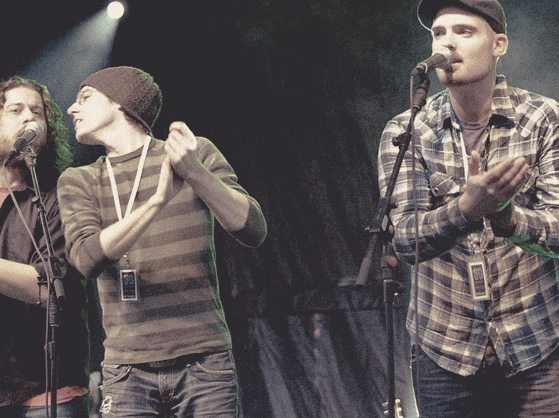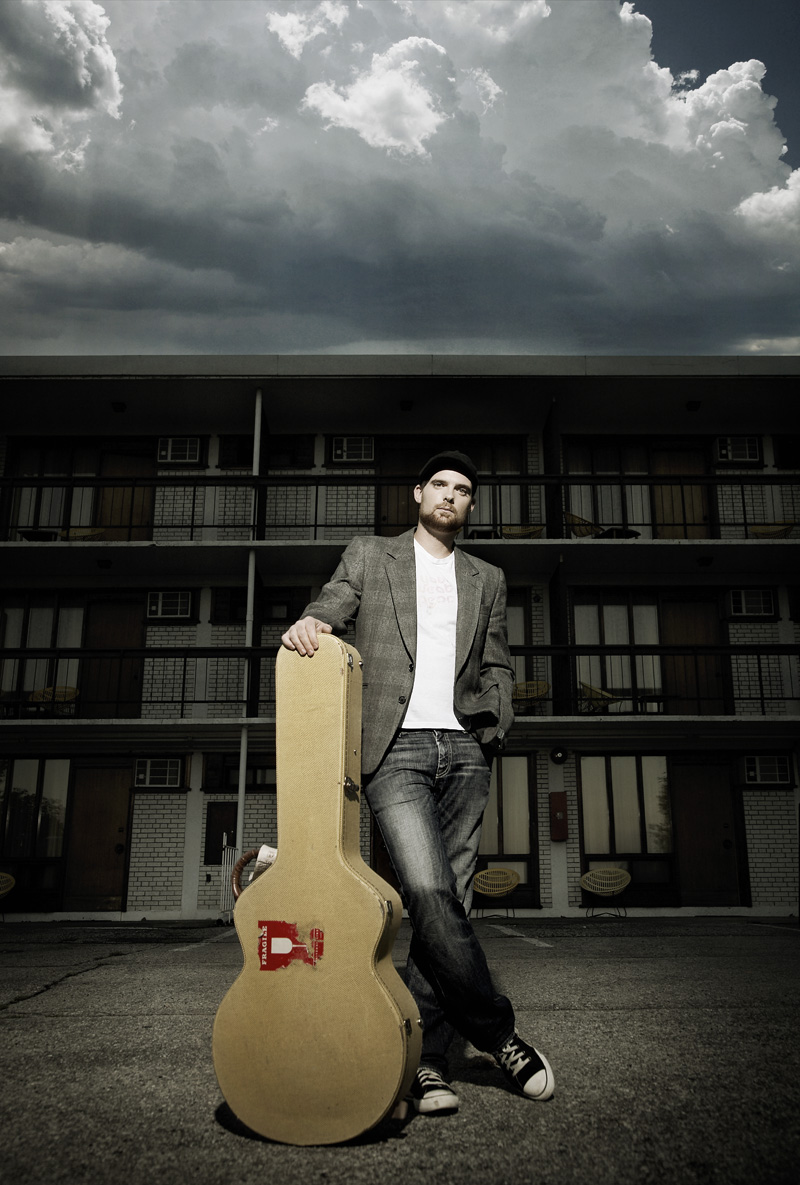Merch
Merch
Merch
An intelligent mobile sales and tracking platform for touring musicians and labels.
An intelligent mobile sales and tracking platform for touring musicians and labels.
An intelligent mobile sales and tracking platform for touring musicians and labels.
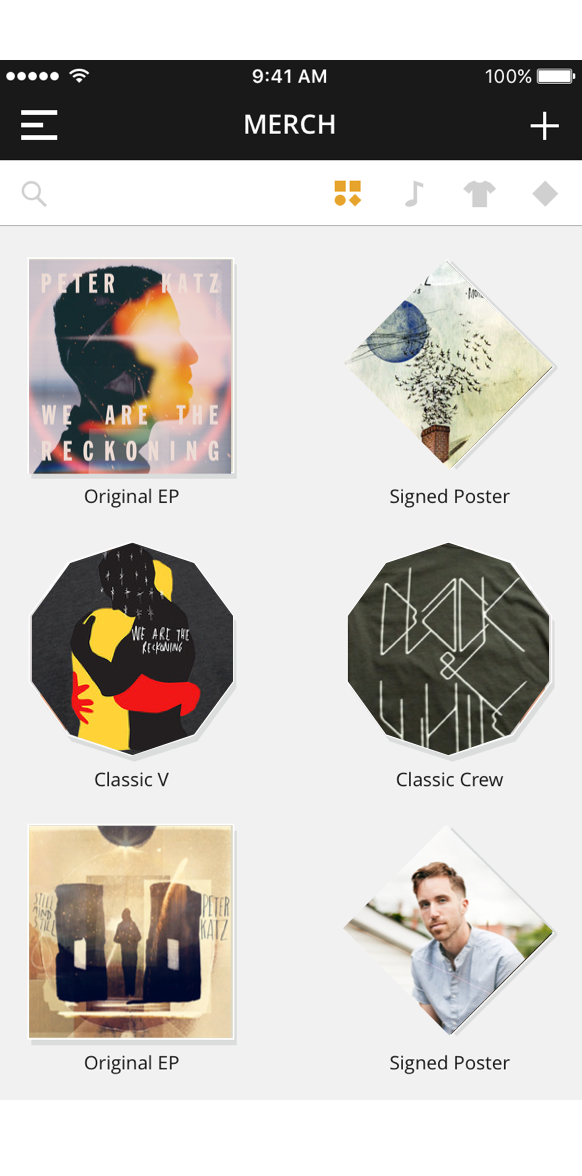
Since Merch was launched, we’ve helped independent artists sell more than $4 Million in merch on the road.
After graduating University with a Bachelor of Commerce in Information Systems, I did what any business major would do - I hit the road with my band.
For almost four years, I toured across North America, Japan and Australia trying to make a living doing what I loved most. I released three albums, had music placed in film and television, and was the voice of a national whisky campaign. Being on the road and running my own music business was incredibly exciting, and incredible challenging.
Music is life. Merch is lifeblood.
Much like a freelance designer, touring as a musician or band without a label meant there was no predictable income, nor was there any guarantee that you'd be making money on gigs that you had booked in the calendar. With my design background, and with the music industry as a whole seeing declining returns on music sales, I started focusing on merchandise because merch sales were putting more money in my pocket than anything else.
As I focused on merch operations, I found that managing merch inventory was a huge challenge. There were no systems in place at that time to reliably predict how much merch I’d need on a run of shows or to track what I was selling at a gig other than a piece of paper we'd haphazardly tick off each night, or the count in/out method where you'd just sell, and then count up your inventory at the end of the night to ensure your numbers were right.
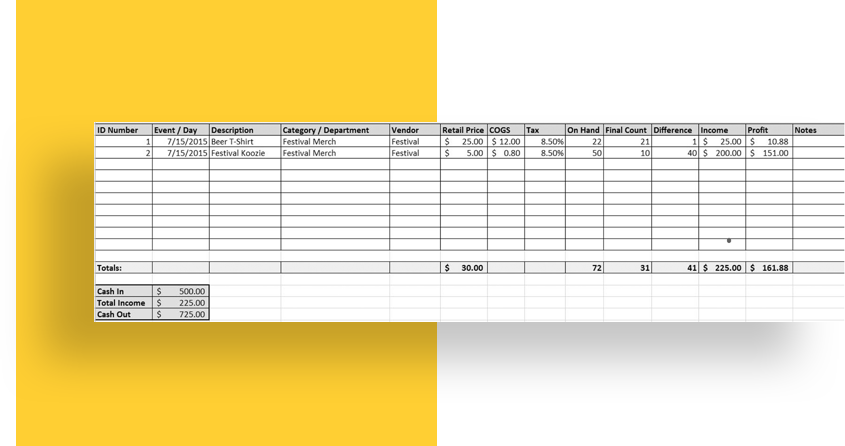
It wasn't great. I'd end up carrying way more inventory than necessary, I couldn't track my cash effectively, and I was sometimes left with boxes of unsold merch after a tour which meant unecessary money out of my pocket. There had to be a better way, so I decided to create Merch.
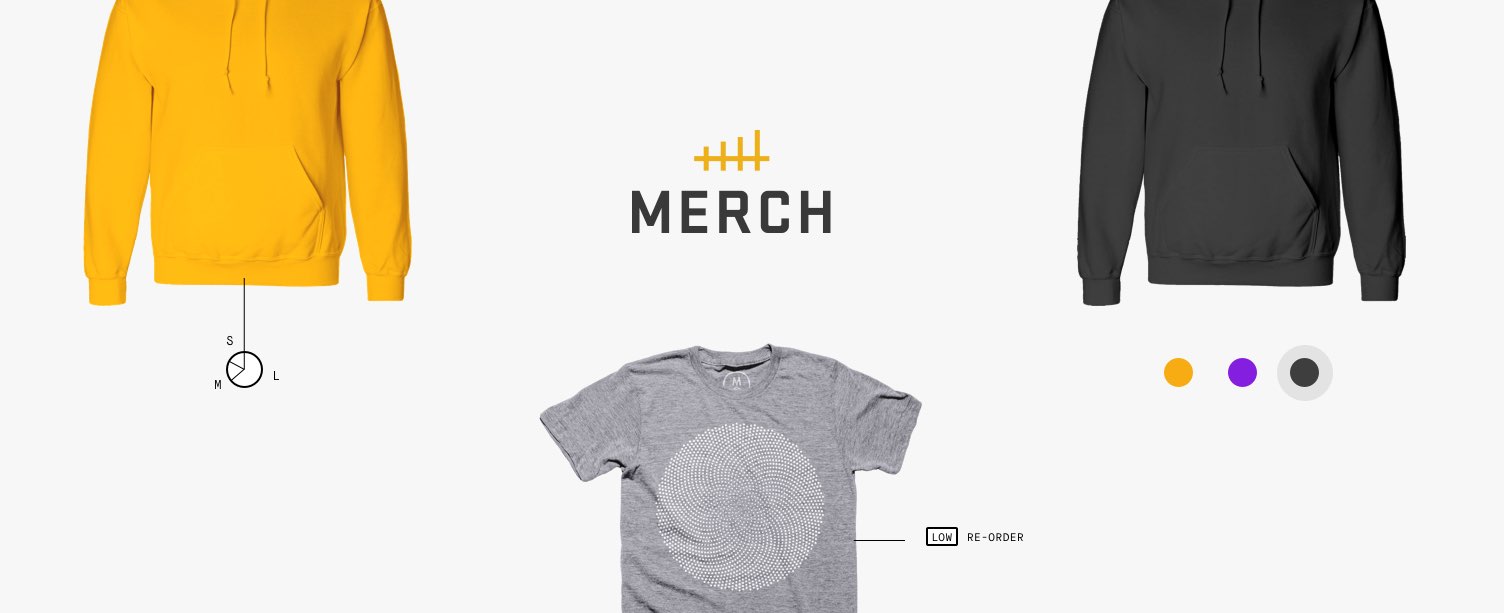
The existing systems for Merch management on the road were spreadsheets, paper or literally just counting things at the end of a gig. There was no business intelligence, and musicians were leaving money on the table. We asked ourselves how we could make this process way easier, and help make independent musicians more profitable.
From Solo Act to Orchestra
As we know, building out a platform on one person's experience does not a successful business make, so I did two things: first, I started interviewing musician friends like Peter Katz, Syd and Robyn Dell'unto, getting in touch with artist managers like Michelle Szeto from Paquin Artists, and learning more about merch struggles from road managers I'd worked with in the past. Secondly, I brought Merch into Steve Megitt, CEO of Filament so we could work on it together in addition to our client engagements. We rounded out the team with an iOS developer and got to work.
As our team continued to grow, we spent a good amount of time at gigs (I know what you're thinking - super hard work) not only watching what happened at the merch table, but making friends with artists and volunteers who were responsible for merch management. During NXNE and Canadian Music Week, we even volunteered to run merch tables for any artist that needed help, so we could experience the struggle first-hand in the trenches. Getting our hands dirty not only helped us hone in on where the biggest needs were, but created a sense of empathy across the entire team for why we were building Merch in the first place.
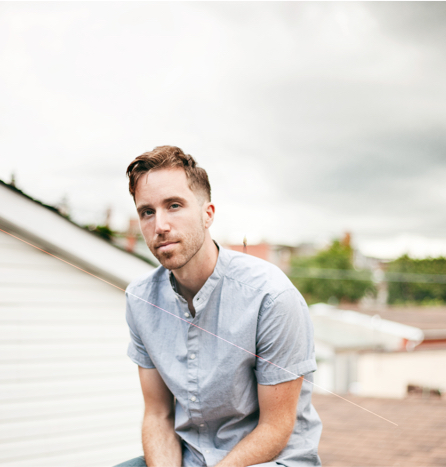
Juno Nominee Peter Katz - just one of the incredible artists we worked with to get early feedback and road test beta features.
Initial Insights
Merch is a $10Bn a year industry in North America. About 40% of that revenue came from actively touring artists that hadn't hit stadium status yet (Heeyyy Beyoncé) which meant a significant market for us to tap into.
Artists across the board were using merch as a means to survive in their careers. More and more they were relying on merch to anchor the financial success of a tour.
Selling merch is vastly different than any other commerce experience. Venues are dark and loud, some have poor connectivity and success at the table depends on speed and accuracy when entering in merch data.
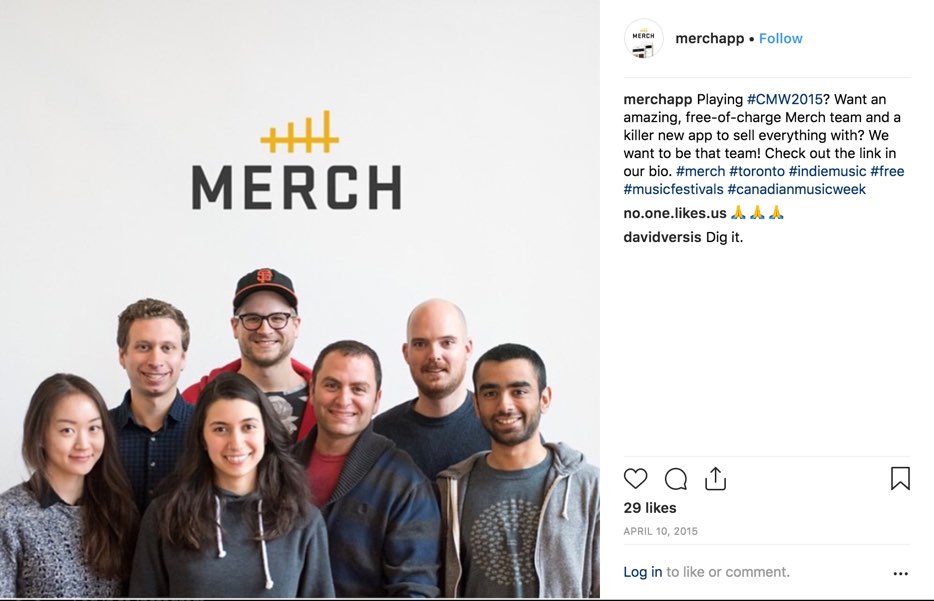
Mapping The Journey
We took our interview insights along with our field study data and began roughly mapping out a series of customer journeys. Breaking down various phases of the sales process helped us uncover opportunities and potential connections between each phase, whether it was setting up a merch table, or closing out a gig for the night. Events that took place before and after merch tracking were just as important - if not more so - than what happened when an item was tracked and sold to a fan.
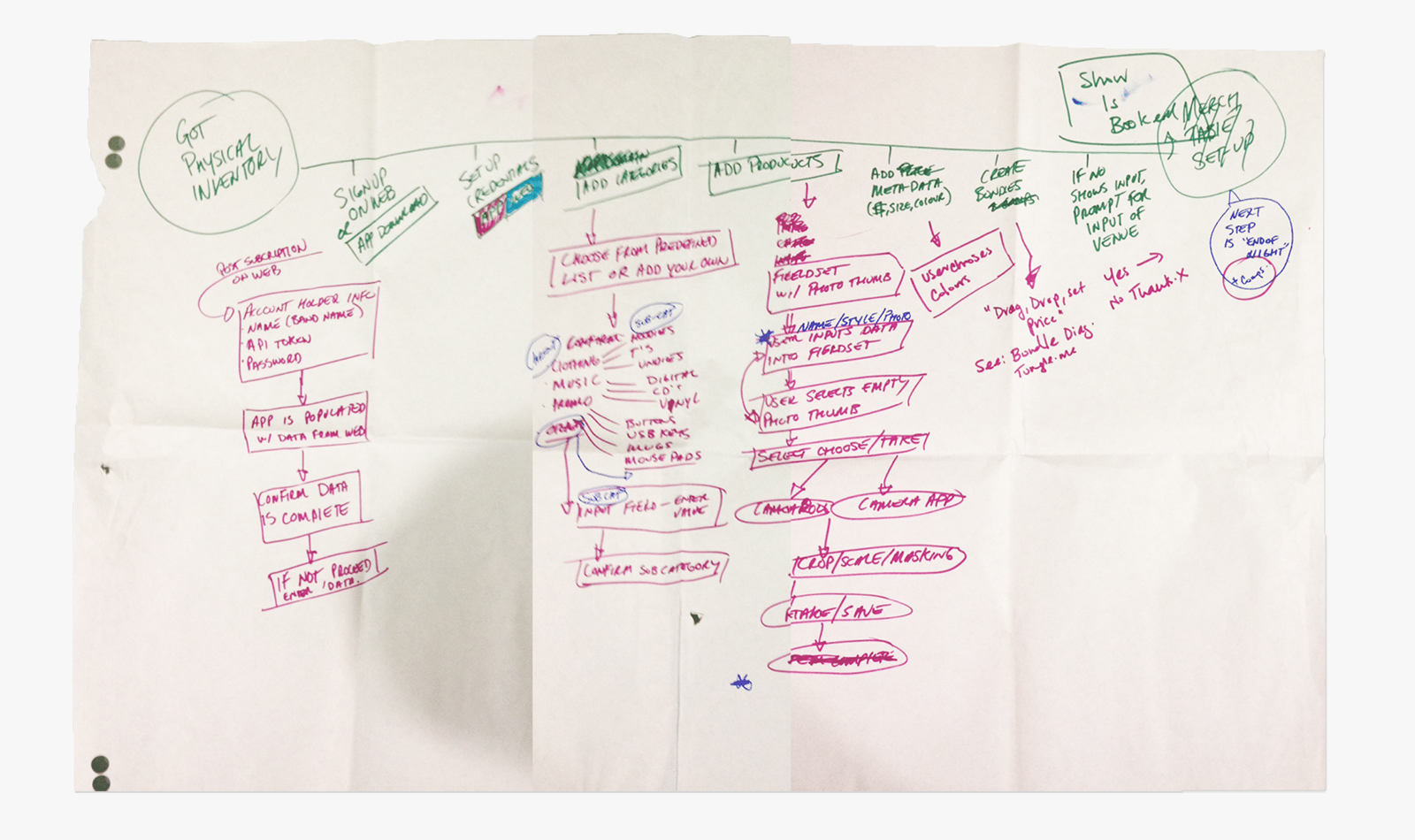
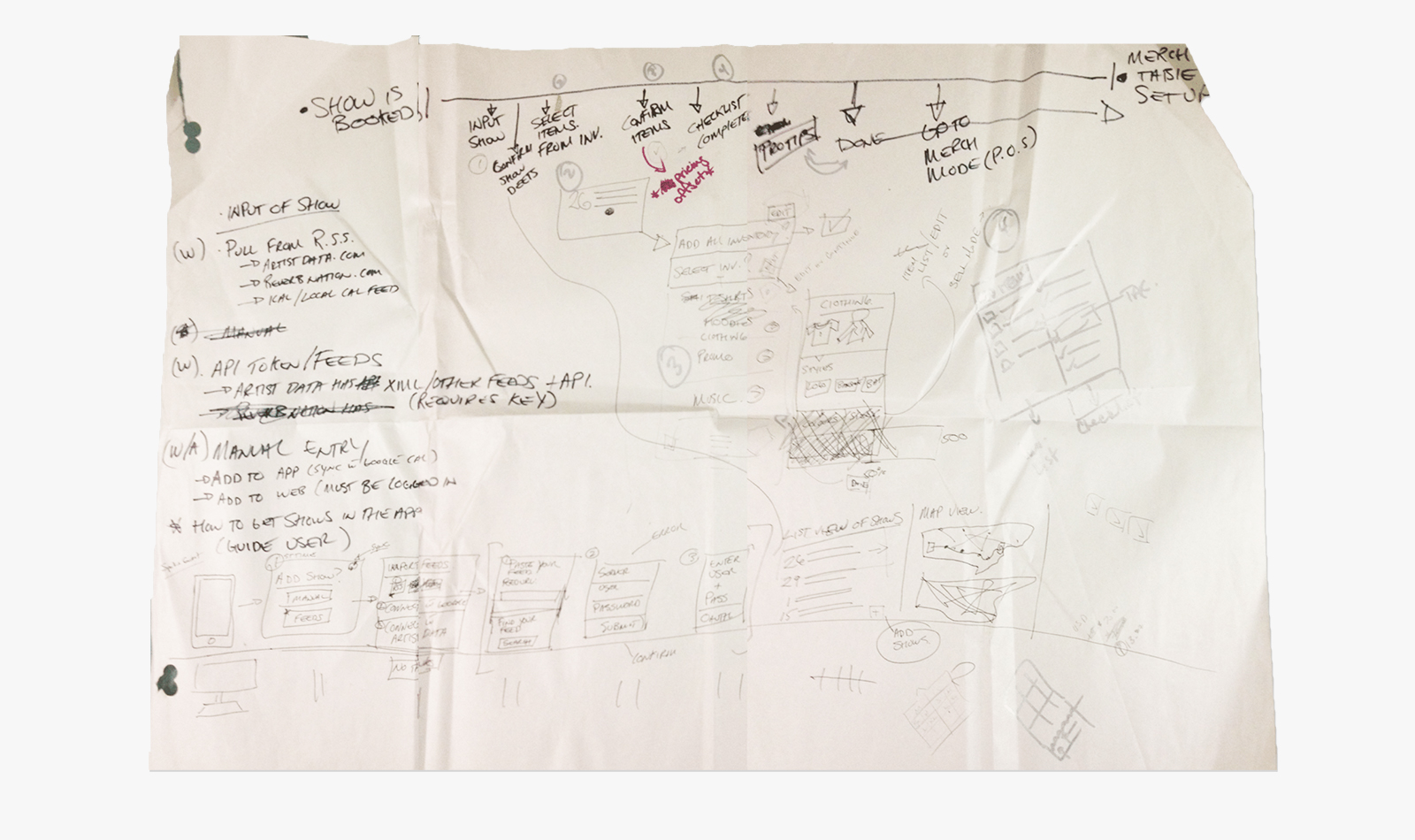
It was also important for us to understand how musicians ordered their merch before going out on tour. For purely economical reasons, musicians and labels tend to create one or two merch designs, and then create a line of clothing based on that one design. This helps save money on setup costs at the printers, and allows them to reap the benefits of quantity orders. This gave us some great insight into how best to organize the sales flow and inventory creation inside the app.
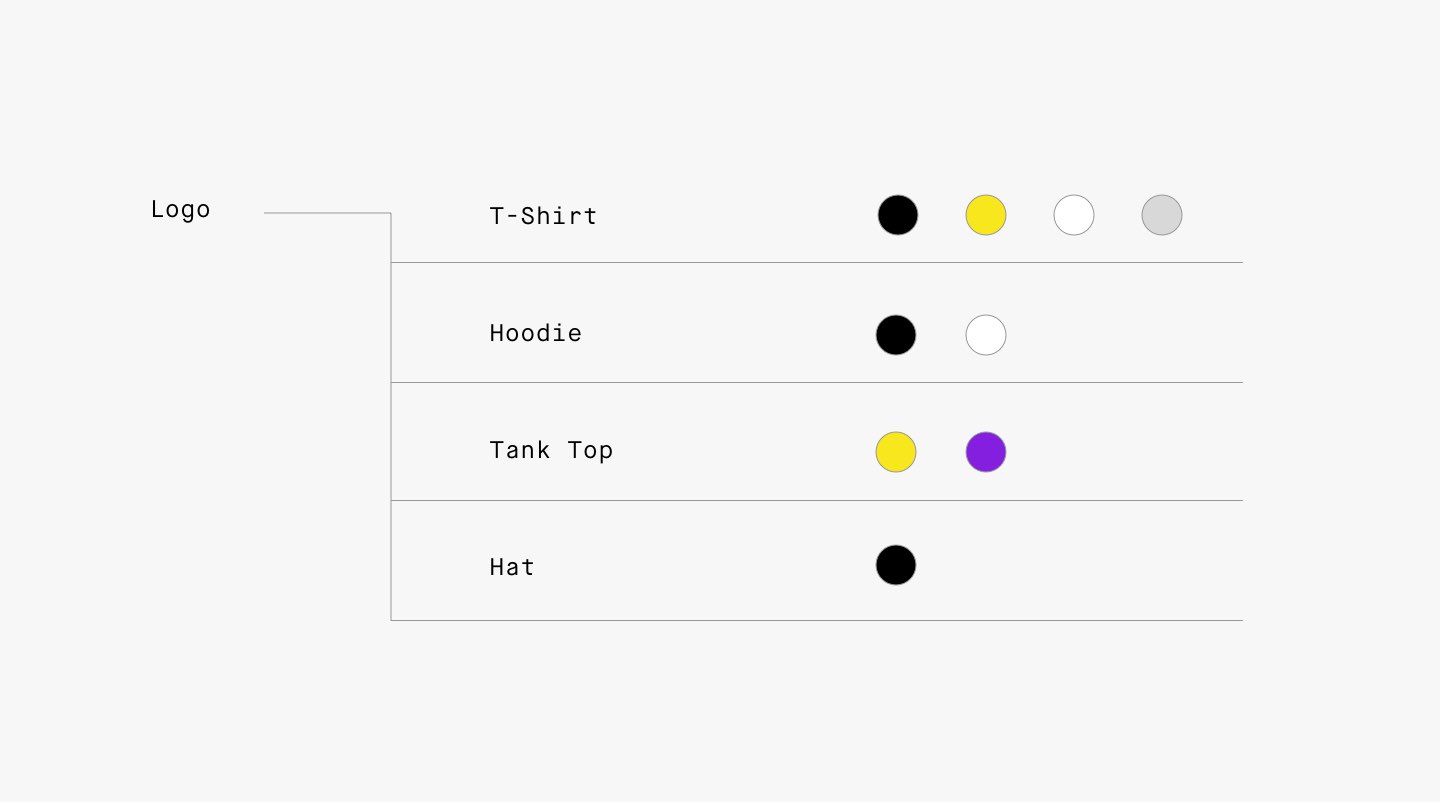
The Road to Beta
Our field research, observation and the great conversations we had with artists and labels helped us identify the constraints our primary users were working under. Whether it was a phyisical constraint like low lighting, the speed at which they had to complete a sale, or a constraint based on the way the industry bought and sold merch, we worked to address those challenges, and turn them into potential solutions.
We began wireframing flows and putting together prototypes we could run through as a team. We took some of the artists we'd been speaking to through the process, but we were admittedly light on thorough user testing and usability studies. In hindsight, spending more time in this phase would have helped us weed out some of the less useful features of the platform, like notes, and save us money on development costs.

Wireframe/Prototype Insights
Due to the nature of merch design, there was multiple formats of merch (clothing, music, promotion) that used the same logo. We knew this, but needed to find a way for musicians and volunteers to easily discern between them as they scrolled through the inventory to make a sale.We used shapes as a way to do this (see below).
There was a lot of data associated with a piece of clothing, for example. Size, colour, style, gender (unfortunately, this is still a popular classification in clothing) all had to be accounted for in an easily parseable screen. This one took multiple iterations.
The idea of a separate mode for selling (aka Showtime) was attractive in initial tests. It locked volunteers out of editable and personal data and kept them focused in sell mode.
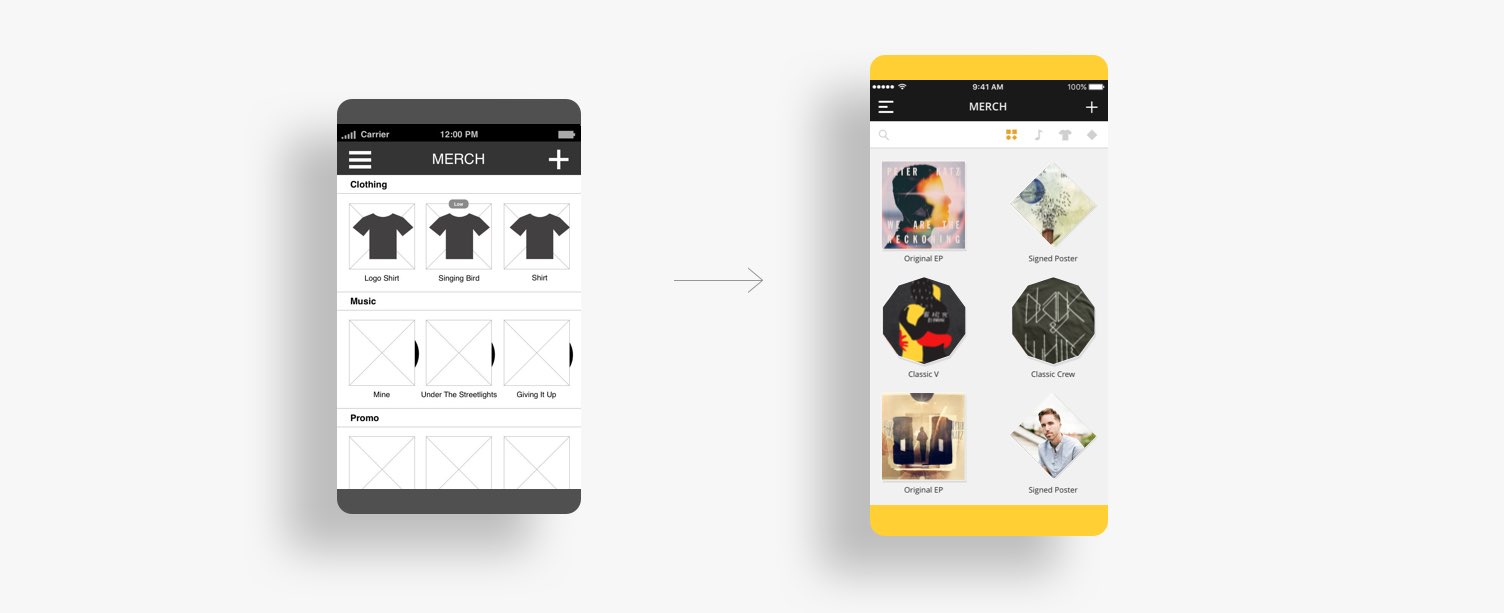
Style and Design Direction
Now that we had some positive feedback around the structure and flows, it was time for us to work on a visual design direction. At Filament, we spent a lot of time honing our style process in order to de-risk the initial phases of visual design, and so we took a page from our own book and created a style tile for Merch. We focused on making it bright and fun, but not childish. This was still a productivity tool, afterall. Most musician-focused apps on the market were far too rock n' roll based on our research, and so we wanted an aesthetic direction that felt approachable whether you were playing bubblegum pop, trip-hop or death metal.

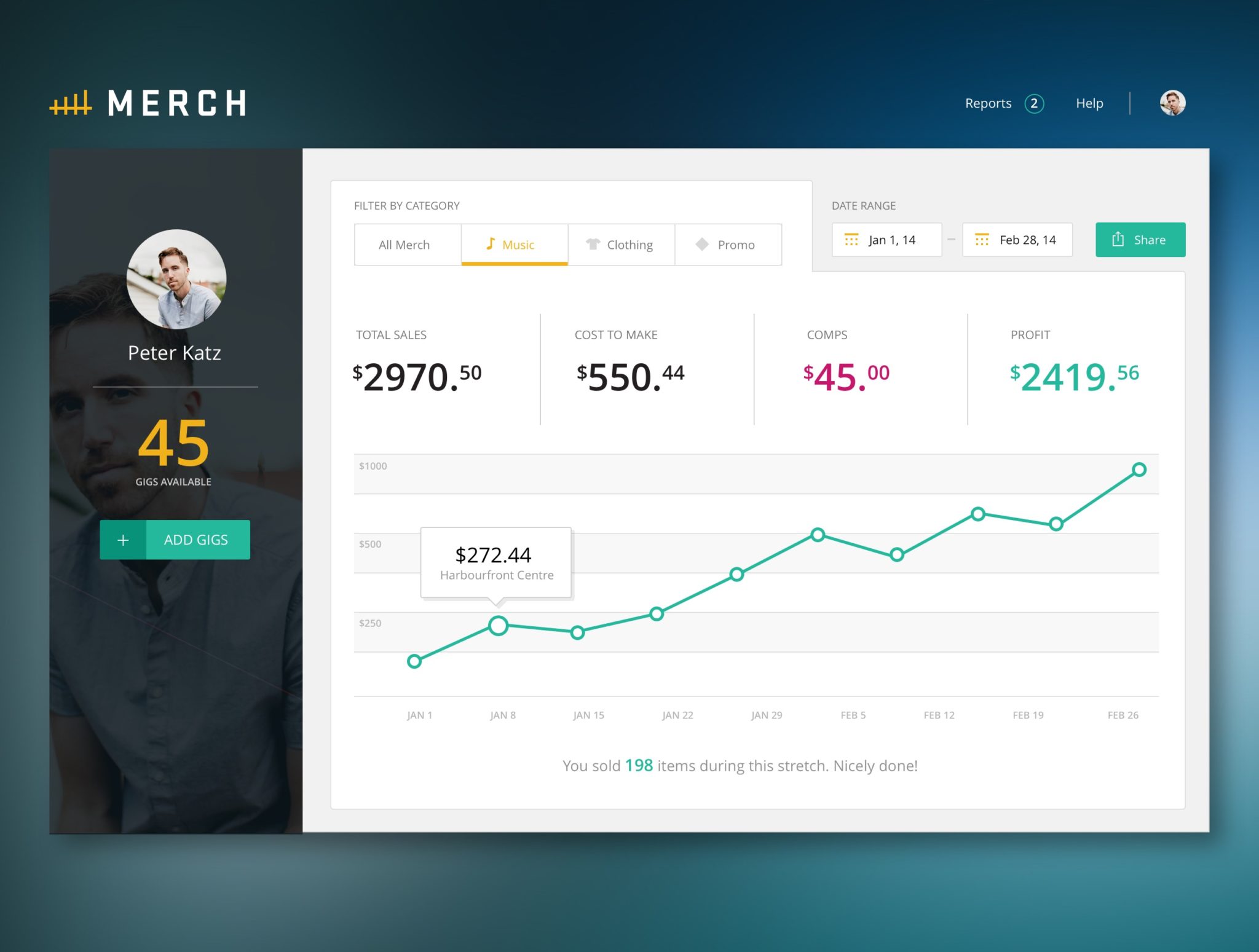
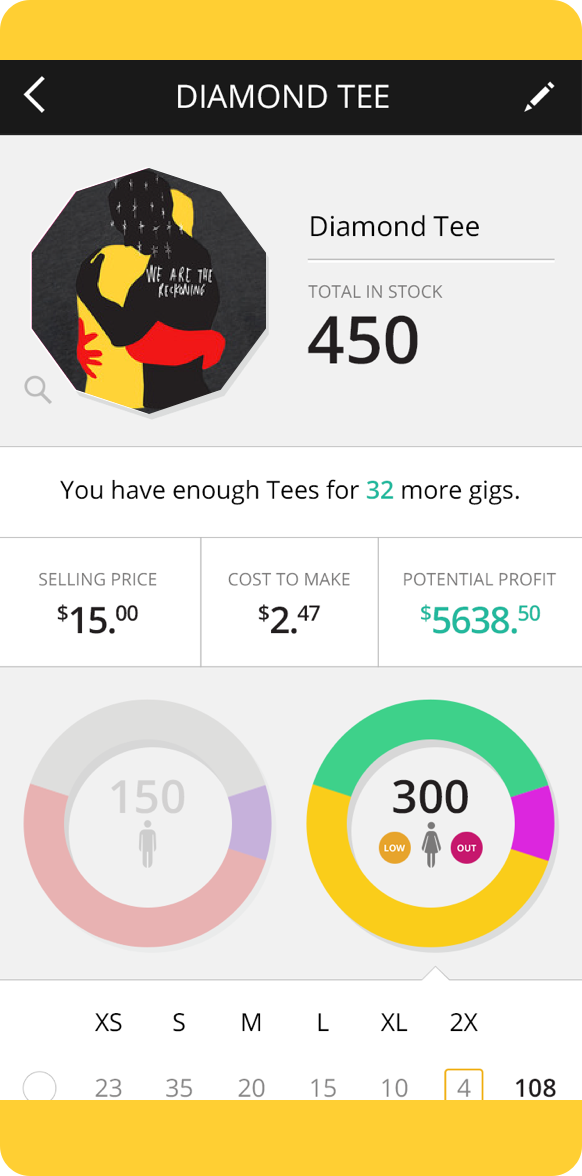
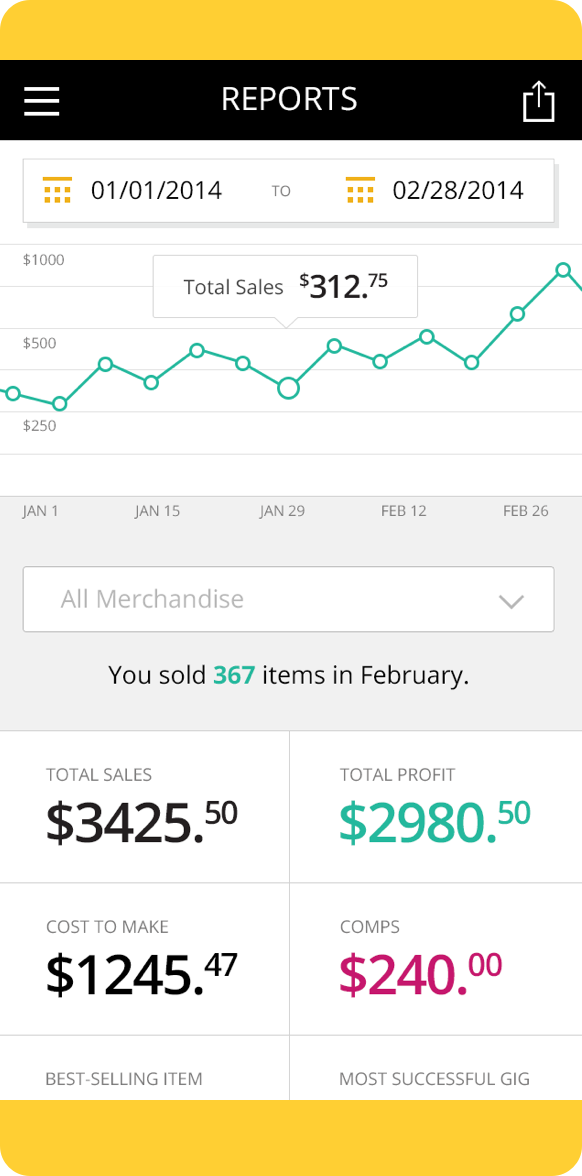
Data is Power
As our beta program ramped up, the most exciting part of the process was seeing the data that artists were entering for their merch inventory, gigs, comps (giveaways) and sales transactions. We went from knowing relatively little about musicians merch offerings to having thousands of data points around tour behavior and sales. Having that data meant we could provide way more value to artists as they went out on their first tour, or give them insight into when they were going to run out of inventory.
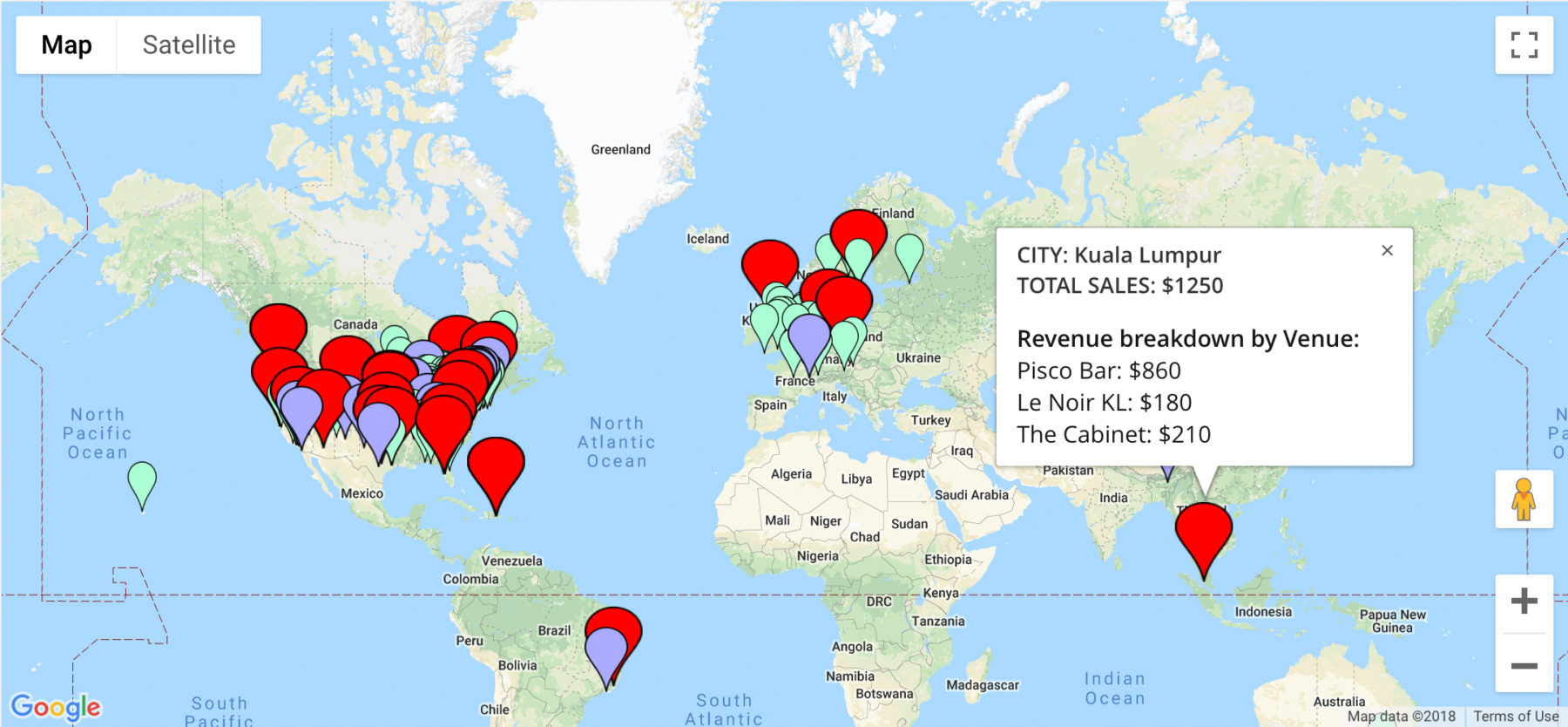
Merch officially launched on the App Store in March of 2016. We decided to give it away for free, and run a public beta for six months. During that time we got some incredibly valuable feedback from thousands of artists and labels across the globe that took our app on the road with them.
A Silly Checkmark
As Merch became the go-to touring companion for artists from Toronto to Tel Aviv, we started getting customer feedback about things they loved, and naturally about things they didn't love so much. Custom sizing, bundling, having multiple people sell with the app at the same time, better off-gig sales management and BandsInTown api issues were the most common, and we had these on our roadmap already, but a challenge came to our attention.
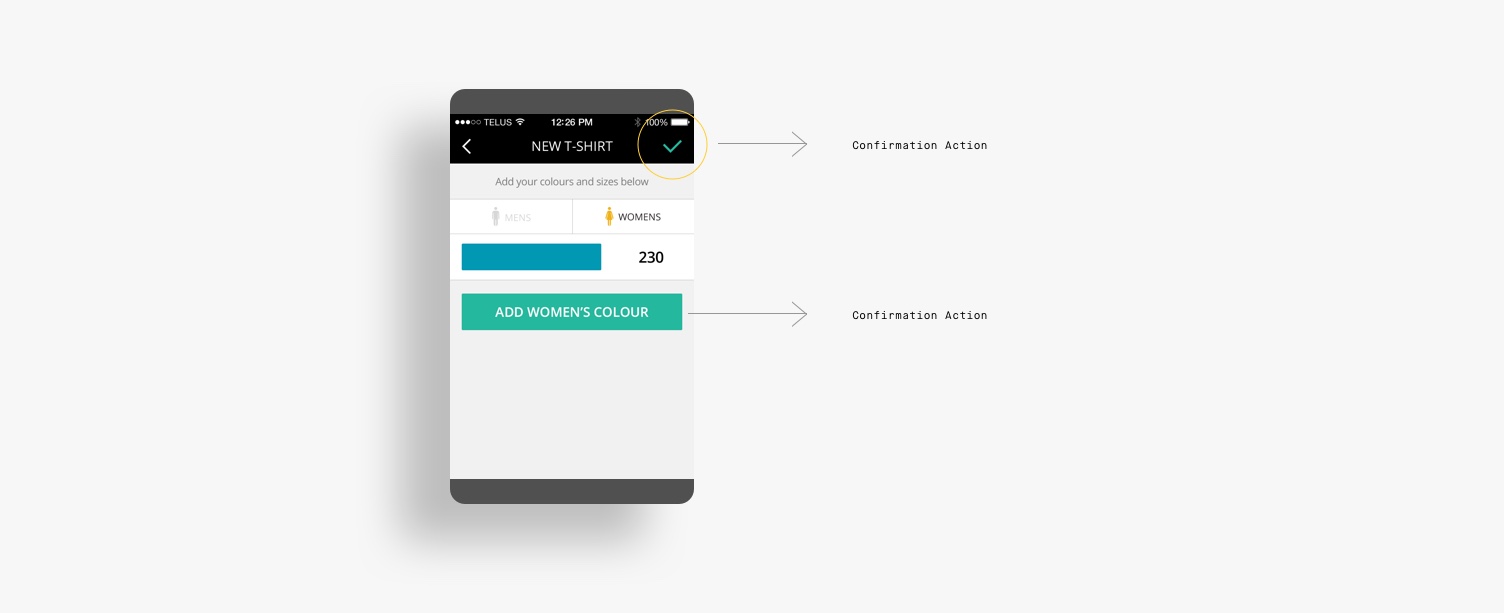
Artists were having difficulty adding clothing to the app because they would try and save their selection when choosing a colour, but there wasn't a clear indication that it was saved. This was our fault - an image was mandatory, but we didn't make it very clear. There was also a checkmark you needed to tap for confirmation of your selections. It had initially tested well (though as I mentioned, we could have tested more thoroughly), but now it was causing confusion. We ultimately re-designed the clothing creation flow to include better confirmations, as well as adding support for unisex clothing options (another popular request).
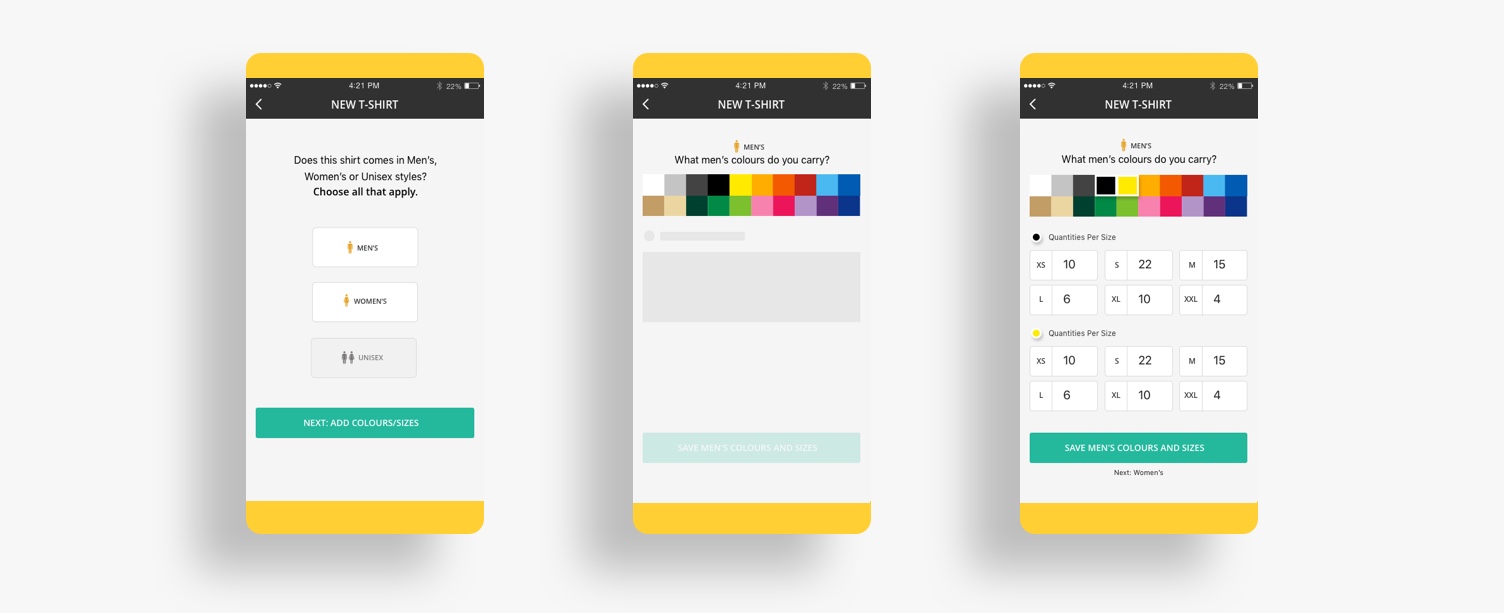
Making Money
We had a user base, and we had some excitement around the app building, but we didn't yet have a monetization strategy. Early ideas revolved around a credit system where musicians would buy "gigs" or tokens of access. This meant they didn't have to pay when they weren't on the road, and they'd get access to the web platform anytime to see reports and analytics. Ultimately, we landed on an integration that would allow us to take a small percentage on top of each credit card transaction. Cash transactions would still be free. Most of our artists were using Square, but we couldn't charge a fee with the Square API, and there wasn't solid international cross-border support for musicians playing in multiple countries. We landed on Stripe Connect and integrated it into the app after our public beta to some success.

Some Bumps in The Road
To take a line from Leon Bridges, no startup is smooth-sailing, and Merch certainly had it's challenges. Building a product inside of an agency is hard, and although there's some amazing success stories like Monument Valley, the vast majority of companies that attempt this either fail, or take way too long. We were the latter. As we moved from wireframe to design and out to beta, the pace of momentum was excrutiatingly slow. We had gotten really busy at Filament, and we wanted to get this up and running on our own steam. Unfortunately, that steam only carried us so far, so fast.
We also had little experience working closely with an iOS developer. We'd done a couple of projects before at the agency, but this was a wholly different undertaking. We ended up designing functionality that was clever, but much harder to build than it could have been, and in turn that cosat us precious time and contributed to developer turnover.
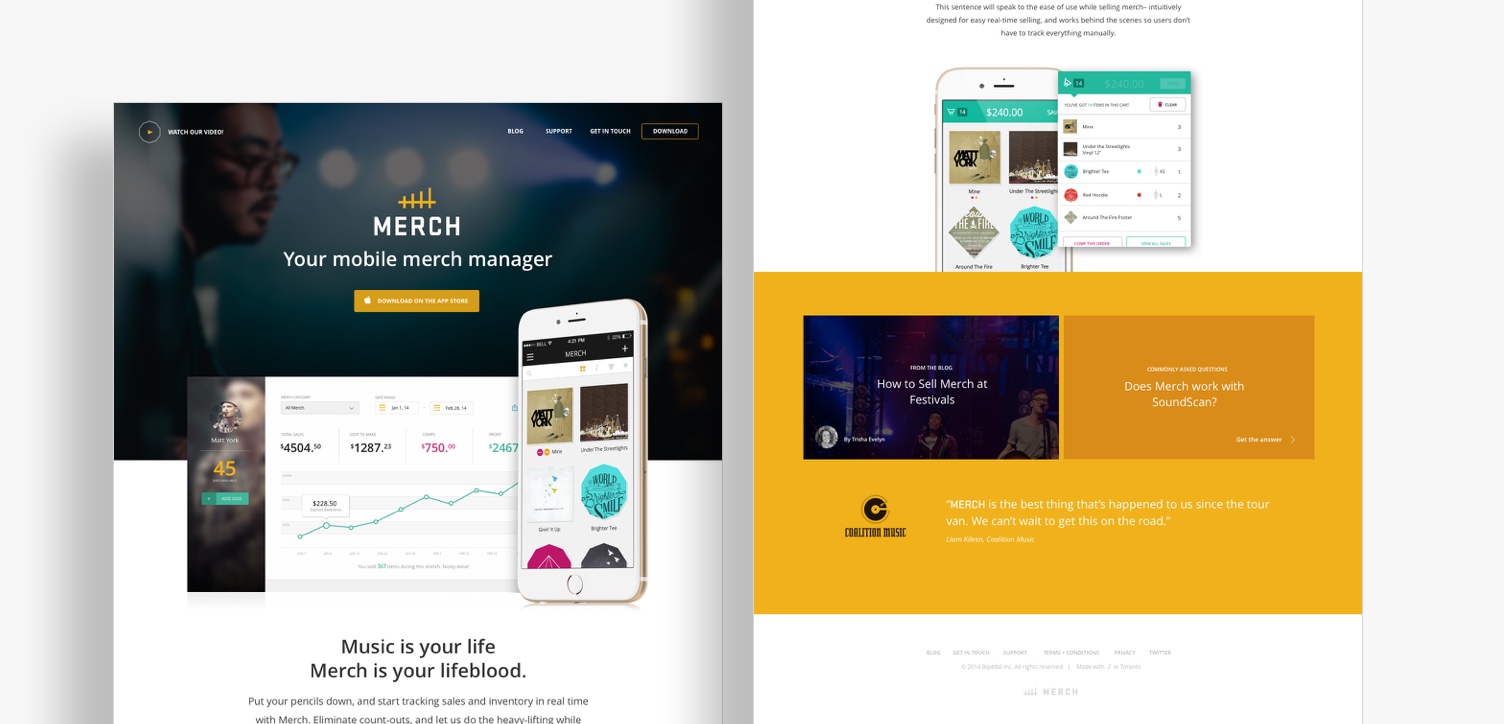
As of 2018, Merch had helped 4000 artists sell more than $4 Million in merch sales. If for no other reason that knowing I help reduce some struggle in musicians lives, this makes me feel pretty good. Merch is still alive and well, but my time there is done. I'm excited to see where it goes next.
Thinking Big
Merch saw some success, but there was always much bigger plans than just being a POS system for musicians. We had data, and that data was incredibly valuable when it comes to spinning up services to feed into the Merch experience. The primary one we were actively pursuing when I left was turning Merch into a full-blown logistics provider including intelligent ordering and dropshipping. We had the business intelligence to run a scenario like this:
You're on tour in New York. We know you're selling 20 shirts a night, and based on that run rate, you'll be out of shirts by the time you hit Chicago. Using that data (and the art files we've received from you during onboarding) we can contact our suppliers in Chicago and have shirts waiting for you when you arrive. We can even arrange for someone to sell merch for the night, if you'd like the white glove kind of service. You can focus on playing your heart out. We can entrench Merch into the lives of every touring musician.
Big shout outs to Steve, Taha, Brock, Trisha, Lindsay, Trevor and the rest of the Merch team.
Working on something exciting?
Say Hello
